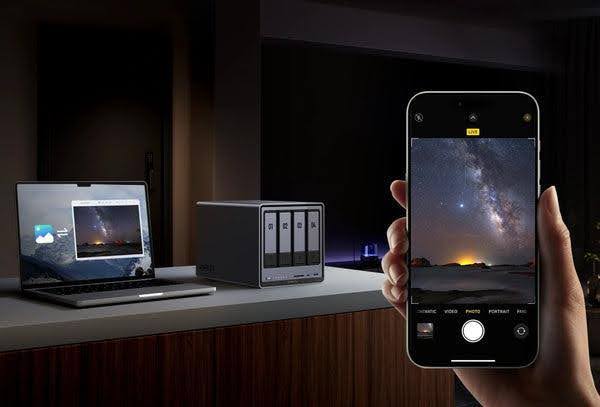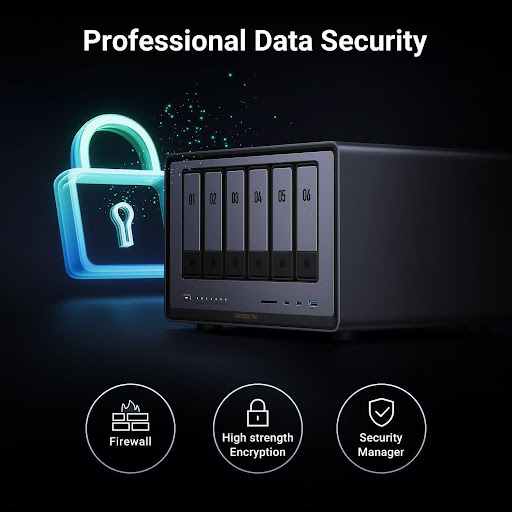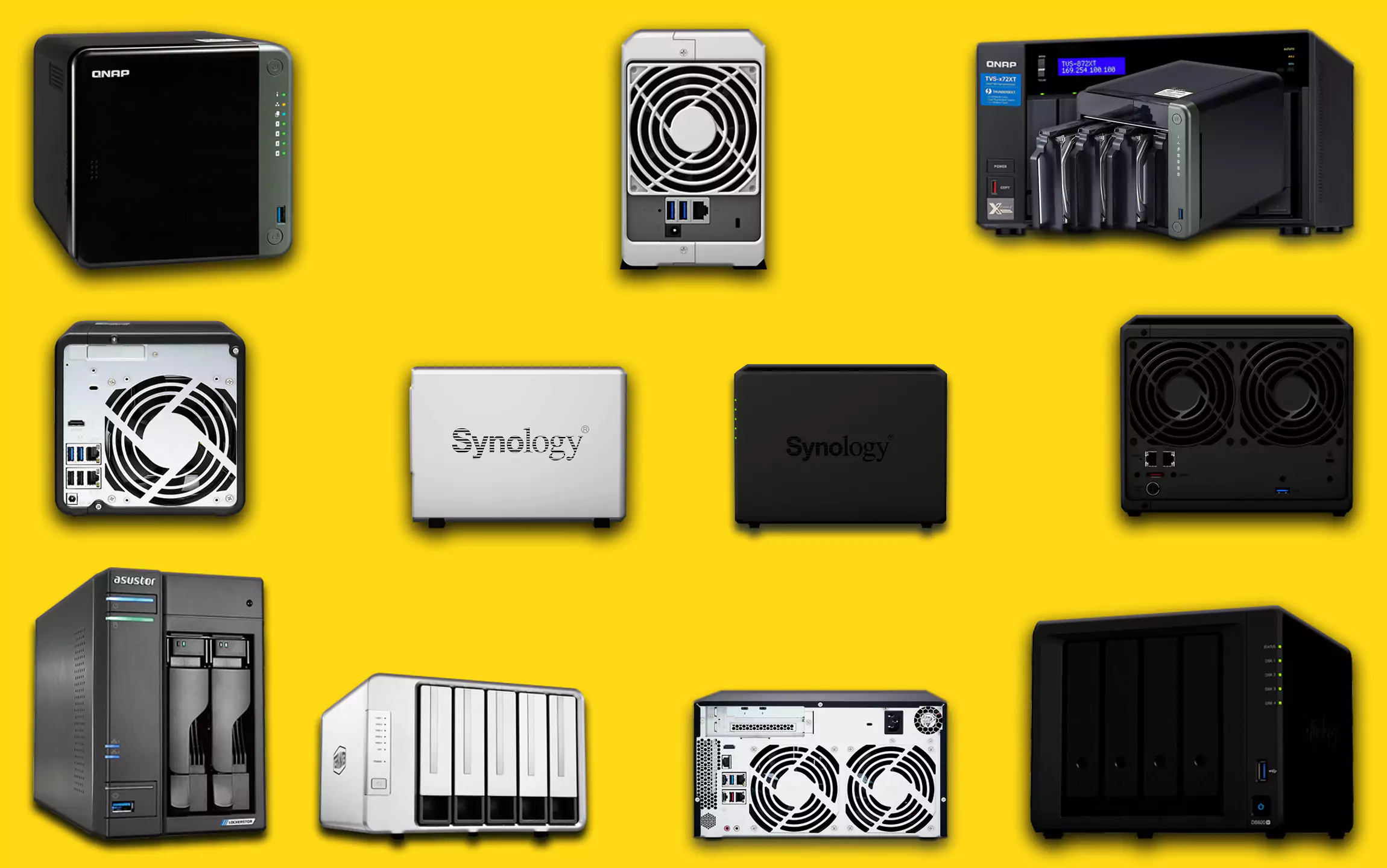In today’s digital age, managing your media collection can feel like herding cats – with photos scattered across phones, movies split between hard drives, and music trapped in various streaming services. The frustration of searching multiple devices, dealing with streaming service limitations, and facing compatibility issues has become all too familiar. Enter the home NAS: your personal media command center. This powerful solution transforms how you store, access, and share your digital content, offering seamless streaming to any device, complete control over your data, and effortless family sharing capabilities. Whether you’re a media enthusiast or a family looking to organize your digital life, a NAS server provides the foundation for a streamlined media experience that works on your terms, whether you’re at home or on the go.
Why a Home NAS Server Revolutionizes Media Management
Moving from traditional storage methods to a home NAS server marks a transformative shift in how we interact with our digital media. Instead of juggling multiple external drives and cloud services, a NAS creates a unified digital hub that’s accessible to everyone in your household. Imagine streaming your entire movie collection to any TV without switching drives, accessing your complete photo library from your phone while traveling, or sharing music playlists with family members without subscription limitations. The system works seamlessly across platforms, whether you’re using iOS, Android, or smart TVs, eliminating compatibility headaches. Beyond convenience, NAS servers offer robust data protection through automated backups and RAID configurations, ensuring your precious memories remain safe. For families, it creates a digital gathering space where parents can share vacation photos, kids can access their approved content, and everyone can contribute to shared collections without confusion about versions or locations. This centralized approach not only simplifies media management but also puts you back in control of your digital life, free from the constraints of subscription services and platform limitations.

Choosing Your Ideal Home NAS: Features That Matter
Capacity Planning for Media Libraries
When building your media server, storage capacity forms the foundation of your system. For a typical family collection, plan for 4K movies consuming 50-100GB each, high-resolution photos at 5-10MB per image, and lossless music at 30-40MB per album. Consider implementing RAID 1 for essential data mirroring or RAID 5 for balanced storage efficiency and protection. Future-proof your setup by selecting a NAS with multiple drive bays, allowing for seamless expansion as your library grows.

Performance Specs for Smooth Streaming
To ensure buttery-smooth playback across devices, prioritize NAS systems with quad-core processors and at least 4GB RAM. Hardware transcoding support is crucial for real-time 4K video conversion, especially when streaming to mobile devices. UGREEN’s latest NAS solutions, for example, feature 2.5GbE network interfaces, providing ample bandwidth for multiple simultaneous 4K streams and faster file transfers during backup operations.
Media Organization Best Practices
Establish a consistent naming convention for your media files to maximize metadata accuracy. Leverage automated tools to fetch movie information, artwork, and subtitles. Create a hierarchical folder structure separating movies, TV shows, and music into distinct libraries. Implement a robust backup strategy using the 3-2-1 rule: three copies of data, on two different media types, with one copy stored off-site. Schedule regular integrity checks to identify and resolve potential file corruption issues.
Step-by-Step Home Media Server Setup Guide
Hardware Installation Essentials
Setting up your NAS begins with proper drive installation. Start by powering down the unit completely and removing the drive bays. Insert your hard drives carefully, ensuring they’re properly seated and secured with the provided screws. When connecting your NAS to the network, use the highest-speed Ethernet port available, ideally connecting directly to your router for optimal performance. For power setup, connect to a UPS if possible to protect against power fluctuations, and position the unit in a well-ventilated area to prevent overheating.
Software Configuration Walkthrough
Once powered on, access your NAS’s initial setup page through its web interface. Follow the operating system installation wizard, which typically takes 15-20 minutes. Create your admin account with a strong password, then set up your storage pool by selecting your preferred RAID configuration. Next, create dedicated folders for different media types: movies, TV shows, music, and photos. Establish user accounts for family members, carefully setting permissions to control access to specific libraries.
Exploring Advanced Data Storage Solutions
The evolution of NAS technology opens exciting possibilities for advanced data management. Cloud integration enables hybrid storage solutions, automatically syncing critical files to services like Google Drive or AWS for additional backup security. Multi-NAS configurations create distributed storage networks, allowing separate units for media streaming and data backup tasks while providing seamless failover protection. Modern NAS systems now incorporate AI-powered tools that automatically categorize photos by faces, scenes, and events, while intelligently organizing video content based on genre and viewing patterns. When planning long-term storage solutions, consider systems that support emerging technologies like faster networking standards and advanced file systems, ensuring your investment remains valuable as media formats and streaming demands evolve.
Empowering Your Digital Media Future
The journey to a streamlined digital media experience begins with a home NAS server, offering a transformative solution to the chaos of scattered files and limited access. By centralizing your media collection, you gain not just convenience, but complete control over your digital legacy. The ability to stream content anywhere, automatic backup protection, and seamless family sharing create a truly connected home entertainment ecosystem. Take the first step toward media freedom today – organize, protect, and enjoy your digital content on your terms, creating a sophisticated yet simple solution that grows with your needs and enhances your family’s digital experience for years to come.
